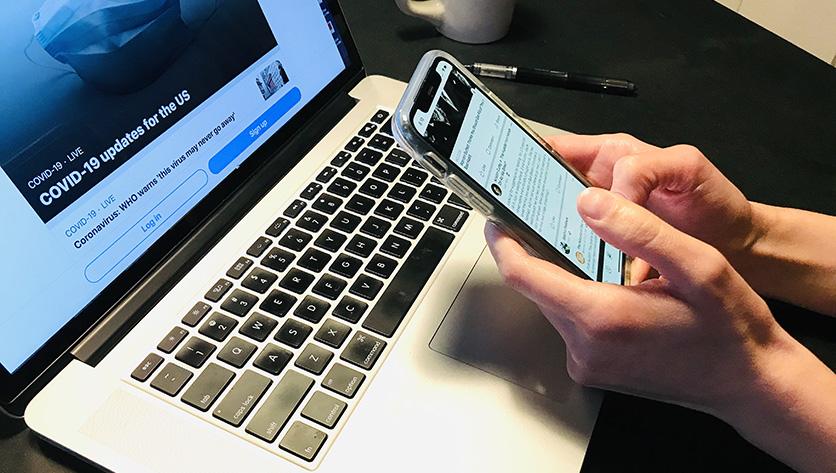COVID-19: When Social Media Becomes our Social Life

Every day it seems no news is good news. During this COVID pandemic, all communication whether text message, media coverage or conversations with neighbors – from 6 feet away, of course – is often lined with some life-impacting news. Anxiety levels tend to increase with every new message.
Then there is social media. If all other methods of communication weren’t overwhelming enough, the all-consuming, 24/7 access to social media, makes it difficult to determine which messages are real and which are intended to create an intended perception.
“Devices and social media platforms are designed to capture our attention and keep us engaged as long as possible,” says Britt Christensen, assistant professor of communication arts at Notre Dame of Maryland University (NDMU). “Studies have shown that for many people there is a release of dopamine – the chemical in our brain – that makes us feel good every time we open our device in anticipation of what we might see whether it be an email or a social update. But it is superficial and short-lived unlike exercise, which also releases dopamine but provides more long-term gratification.”
With a decrease in face-to-face meetings, and more time to fill with less work and social activity, people are spending more time than ever on their devices, and specifically on social media platforms.
In addition to social media, because of virtual learning and working from home mandates, people are spending more time on devices in general.
According to Dr. Maria Mouratidis, psychology professor and psychology department chair at NDMU, “People are claiming to be more exhausted now sitting at home than they were before. Zoom fatigue. The brain understands the difference between virtual and actual and is straining more than ever. Before people would have breaks between meetings, between the time they spend on their computers. Today, people tend to sit in one spot all day in front of the computer with no breaks.”
Social media can create fear and skews perceptions. People often feel mislead by what they read or see on social media.
Some guidance on how we keep a handle on our social media use?
“Don’t connect what you read with what you think or do,” says Mouratidis.
“It is our responsibility to share accurate information,” says Christensen.
Be a savvy and responsible media consumer. Control what you read with filters and hashtags, and following trusted, expert sources.
Despite how it may seem, all is not lost. You can be informed without allowing media platforms to consume your every thought and daily life.
- Use timers to limit your screen time
- Schedule time to be device-free
- Turn off notifications – everything does not need an immediate response




